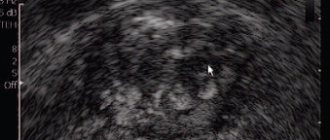Epidural analgesia is a regional pain management method that relieves pain only in a specific area of the body. This procedure is performed by an anesthesiologist. The essence of the method is the blockade of the nerve roots of the spinal cord at the level of the lumbar region and loss of sensitivity in the blocked area (uterine area). To do this, a catheter is installed in the space near between the lumbar vertebrae into which an anesthetic (local anesthetic) is injected. At the same time, the pain during contractions significantly weakens or disappears. Childbirth is tolerated much more comfortably, and the woman in labor rests.
Why is pain relief needed?
Since ancient times, humanity has been trying to find a way to reduce pain in women in labor. In ancient times, decoctions of herbs and smoking were used for this; later, synthetic painkillers appeared. Childbirth is one of the most painful processes, and the medieval concept of the need for female suffering is, fortunately, a thing of the past.
Research by modern scientists directly suggests that excessive pain during childbirth sharply increases the level of adrenaline and norepinephrine in the blood, and this can lead to disruption of oxygen transport in the body. As a result, the frequency of contractions may decrease with the possible development of fetal hypoxia.*
What is epidural anesthesia
The epidural space surrounds the outside of the dura mater, which covers the entire spinal cord. In the epidural space of the lumbar region there are nerve endings that conduct pain impulses from the uterus. An injection is made in the lumbar region and an anesthetic is injected.
When painkillers are administered, sensitivity is temporarily switched off, which allows the woman in labor to stop feeling pain. The dose of the anesthetic drug is selected and adjusted for partial or complete pain relief.
Unlike general anesthesia, epidural anesthesia allows the woman in labor to remain conscious at all stages. Most often, such anesthesia, unless there are special indications, is used only for the period of contractions, which can last for several hours, and the woman gives birth without anesthesia.
Spinal or epidural?
These two types of pain relief are very often confused, because they are really similar in appearance, especially for those who are far from medicine. However, there are differences between them.
Spinal . This anesthesia uses a thin needle through which an anesthetic is injected into the cerebrospinal fluid. Nowadays, this method is used less and less, because if performed incorrectly or if contraindications are not identified, it can lead to serious consequences.
Epidural . For this type of anesthesia, local anesthesia is first performed, after which a puncture is made at the puncture site with a special needle that penetrates to the dura mater. When performing this manipulation, it is very important not to move so that the doctor’s hand does not tremble. A catheter is inserted into the puncture through a needle, through which anesthetics enter the epidural space. His tube will remain in your back as long as necessary to maintain the pain-relieving effects of the medications. After removing the catheter, only a small puncture will remain, which will be treated and covered with a bandage.
Mechanism of pain relief
To understand how epidural anesthesia works, a short excursion into anatomy is necessary.
As you know, the spinal cord is located in the spinal canal and is surrounded by several membranes. Nerves - the so-called spinal cord roots - stretch from the brain to other organs. The anterior roots are “responsible” for the contraction of skeletal muscles, i.e. for movement, and the rear ones for sensitivity, including pain. Nerve roots exit through the dura mater into the epidural space
, where they are surrounded on all sides by adipose tissue. It is into this space that the anesthetic substance is injected.
Note.
Sometimes
the epidural space
is called the epidural space. The words “peridural” and “epidural” are derived from the Latin dura mater - dura mater, epi - above, peri - about.
Why is a procedure affecting the part of the central nervous system - the spinal cord - relatively safe?
- The anesthesiologist's needle does not reach the spinal cord and, naturally, does not penetrate it.
- The anesthetic substance is delivered to the sensitive dorsal roots and, if it affects the anterior motor roots, it is usually insignificant (a woman giving birth usually retains the ability to move independently, although sometimes she may feel numbness in her legs - this depends on the drug used),
- An anesthetic introduced into the epidural space enters the blood very slowly. The liver manages to neutralize the medicine before its concentration in the blood becomes sensitive to the child.
Effect of anesthesia on a child
Proponents of “natural childbirth”, without any anesthesia, insist that drugs can negatively affect the fetus. However, modern research refutes this fact: as a result of the tests, it was found that epidural anesthesia does not affect the child in any way, but greatly facilitates the birth process.** In addition, for this type of anesthesia, drugs are used that do not penetrate the placental membrane of the fetus .
The main advantage of epidural anesthesia during childbirth is that a woman can relax, calm down and confidently move on to the process of expulsion of the fetus without neurosis and stress.
Indications for pain relief
Unfortunately, not all medical institutions can yet make an independent decision about the use of anesthetics. In most cases, the following situations are indications for the need for epidural anesthesia.
Premature pregnancy. Relaxing the pelvic floor muscles allows the baby to pass through the birth canal more easily without encountering resistance. For babies who were born prematurely, unnecessary stress is contraindicated, so if there are no indications for a caesarean section or other individual characteristics of the pregnancy, it is recommended to give birth with epidural anesthesia.
Discoordination of labor. This is the name of a condition in which contractions last longer than expected, but the dilation of the cervix is not sufficient. In this case, epidural anesthesia will relieve spasm and help labor.
High blood pressure. If you have hypertension, childbirth can lead to strokes or other dangerous consequences, so doctors may prescribe either a cesarean section or use an epidural, which will help normalize blood pressure levels.
The need for surgical intervention. In cases where general anesthesia cannot be used, but surgical assistance is required, epidural anesthesia is used as an alternative option.
Pain relief without drugs
So, if a woman is in good health and there are no complications during labor, then you can try to avoid painful sensations using various physiological methods: massage, water procedures, gymnastics and special breathing. All processes in the body are interconnected: if a woman is afraid, then a muscle spasm occurs, causing oxygen deficiency in the blood vessels and acute pain. Tension of the facial muscles causes a response spasm of the uterine uterus and delayed dilation of the cervix. Based on these data, when contractions occur, you need to relax and calm down, feeling that the pain is going away every minute.
Of course, it is not easy to immediately master such a technique, so during pregnancy it is necessary to attend special courses for expectant mothers, which teach the correct breathing tactics at different stages of childbirth, show basic relaxation techniques and exercises to relieve pain. Such courses can and should be attended with a partner, since many exercises are based on teamwork.
For physical exercise, you don’t need any special devices, you just need to listen to yourself and change positions more often, since physical activity makes labor easier and reduces pain. If the doctor has not prescribed bed rest, you need to walk more, preferably lying only on your side. Sitting is undesirable, as this creates pressure on the perineum.
Many women benefit from water procedures, but they can only be carried out if the water has not broken, since the risk of infection is very high. A warm bath with hydromassage is a great way to relieve tension and help you relax, but either a partner or someone from the medical staff must be present during the procedure. You can also use a shower cabin, directing streams of water to your back and lower abdomen. The water should be at a temperature of about thirty-six degrees so as not to cause bleeding. Aromatherapy, self-hypnosis and other techniques, including massage, are also quite effective in relieving severe pain. If desired, you can resort to a variety of techniques to minimize pain, but before using them, you should definitely talk with the doctor leading the birth.
When not to use
Any medical intervention has its contraindications, and this includes epidural anesthesia. However, even the presence of contraindications is not a reason to give birth without anesthesia. In this case, doctors can choose alternative ways to reduce the pain threshold.
Low blood pressure. With low blood pressure, the administration of painkillers can cause a sharp drop in blood pressure.
Spinal deformity. If a woman has degenerative disorders in the spinal column, it is extremely curved or abnormal, access for a boat will be difficult. This means that when the drug is administered, it may end up in the wrong place or may not block pain.
Inflammation in the puncture area. In case of any inflammatory processes in the lumbar region (the site of epidural anesthesia), injections are prohibited, as they can provoke suppuration or other unpleasant consequences of infection in the blood.
Blood clotting disorder. Some painkillers can thin the blood, which is especially dangerous if uterine bleeding occurs during childbirth.
Intolerance to a certain group of drugs. Usually analogues are simply used, but in rare cases epidural anesthesia becomes impossible
Unconscious state. Firstly, an unconscious woman, in principle, does not feel pain, and secondly, she cannot give her consent to the use of anesthesia, which is required when prescribing a certain group of drugs
Advantages and disadvantages of epidural anesthesia during childbirth
Like everything in this world, the use of epidural anesthesia (EDA) has fans and opponents.
Table: arguments of the parties in defense and against epidural anesthesia
| Positive influence | Negative influence |
| It has a beneficial effect on the woman in labor, because it relieves pain during labor, thereby improving psycho-emotional well-being. | Muscle tremors often occur due to a failure in the transmission of nerve impulses. It does not affect the baby in any way. |
| It does not harm the baby being born in any way, which is confirmed by data from cardiotocograph (CTG) studies. | The legs periodically go numb and feel heavy. This reaction is quite adequate to pain relief and goes away as you recover from anesthesia. |
| It cannot stimulate the labor process on its own, but if prolongation of labor is associated with nervous overexcitation and fear of pain, an epidural helps to calm down and slightly speed up the birth of the child. | Sometimes there is an allergic reaction to the drug or its components. |
| It has the ability to lower blood pressure, which greatly helps women who have suffered from high blood pressure throughout pregnancy. | Blood pressure decreases, and this does not benefit every woman in labor. |
| It is extremely rare to experience breathing problems, which can be helped by an oxygen mask. | |
| The introduction of anesthetics into the venous duct when the catheter enters the vein can cause disturbances in the functioning of the heart or provoke loss of consciousness. But the anesthesiologist strictly ensures that this does not happen, for which he takes repeated samples when installing the catheter. | |
| In some women - up to 5% of the total - there is no effect of pain relief and other types of anesthesia have to be used. | |
| You may experience back discomfort for several days after giving birth. | |
| The process of installing a catheter is sometimes accompanied by lumbago in the arms and legs. |
Doctors have differing opinions regarding the use of epidural anesthesia. But both adherents and ardent opponents note as the main advantage or disadvantage the ability of this anesthesia to significantly lower blood pressure, and only then other indicators.
Consequences and complications
In most cases, epidural anesthesia is well tolerated without negative consequences for mother and child. However, there are situations when unpleasant complications actually occur, usually in the woman in labor.
Entry of drugs into the venous system. If the doctor gets into a vessel during a puncture, and the anesthetic ends up in the bloodstream, the woman will feel weakness, dizziness, and numbness of the limbs. Fortunately, this is all fixable: usually such reactions occur instantly, even when the catheter is installed, and if the anesthesiologist is notified in a timely manner, unpleasant consequences can be avoided. Therefore, if you experience any of the above symptoms during epidural anesthesia, you should inform your doctor.
Allergy. Unfortunately, no one is protected from possible negative reactions of the body to the anesthetic. If you have allergic reactions (especially to medications or, for example, anesthesia administered during dental treatment), you must tell your doctor about it. This will greatly help the doctor, who will select the correct drug and its dosage, and will protect you from allergic reactions and anaphylactic shock.
Back pain. Some women, in reviews of the use of anesthesia during childbirth, complain that after an epidural the lumbar spine hurts. This happens at the site of puncture and installation of the catheter. This pain usually goes away quickly in the postpartum period. But you should definitely tell your doctor about it.
Fall in blood pressure. Most painkillers actually lower blood pressure significantly. To avoid dizziness, doctors usually recommend that their patients lie down and drugs are administered through a catheter in small doses.
Pros and cons of drug pain relief
During the administration of any medicine, including analgesics, there is always a risk of it penetrating the placental barrier and causing harm to the baby. Currently, almost all drugs approved for use during labor are not dangerous for infants, but can cause minor abnormalities in the respiratory system and a decrease in the overall Apgar score.
Often, if very severe pain occurs during contractions, doctors use narcotic analgesics. They not only act like antispasmodics, relieving spasm of the cervical muscles, but also stimulate contractions at the level of brain receptors and significantly reduce pain. These drugs are administered intramuscularly or intravenously, many women after fifteen minutes notice a decrease in pain during contractions, the appearance of mild drowsiness and peace.
However, narcotic analgesics penetrate in full into the blood of the fetus, provoking depression of respiratory functions and a general lethargic state of the baby. The problem also arises from the fact that the drug is eliminated from the baby’s body seven times slower than in an adult, and therefore, immediately after birth, such children may need the help of a resuscitator. Knowing these problems, doctors may inject an antagonist drug into the baby's umbilical vein to speed up the elimination of the drug.
If a woman’s anxiety and muscle tension are too high, she may be prescribed mild tranquilizers, which do not relieve pain but relieve tension. An injection of such a medicine usually has a positive effect on emotionally labile women prone to hysteria and has a mild sedative effect. Tranquilizers can harm a child, causing allergic reactions and depression. The severity of side effects depends on the dose of the drug.
During childbirth, the doctor may give an injection into the perineal area to prevent sharp pain when it is stretched or torn. This is done mainly with the drug lidocaine or similar. It does not cause side effects and does not harm the baby, but it also cannot be used as an effective pain reliever.
Of course, in case of very severe, unbearable pain or a long labor, the woman in labor has the right to ask for an injection of a narcotic drug, but the expectant mother must remember that the harm from the drug to the baby can be irreparable. Therefore, before giving birth, you need to do everything that is necessary to ensure the normal development of the birth process, try all the relaxation and breathing techniques that relieve pain. After all, restoring a child’s normal condition after complications caused by the use of narcotic analgesics can be quite lengthy and difficult.
Take the first step
make an appointment with a doctor!
Other disadvantages of anesthesia
Most of the consequences depend on whether the anesthesiologist performs his manipulations correctly and whether the woman in labor follows all the doctors’ recommendations. The fact is that if the drug is administered incorrectly, pain relief may occur partially (in 15% of cases) or not at all (5%). Often, incorrect insertion is due to a woman’s excess weight or abnormalities in the development of her spine.
Another rare phenomenon is “mosaic” anesthesia. It occurs due to the fact that there are partitions in the epidural space that do not allow the medicine to be evenly distributed throughout the fluid. Loss of sensation on one side of the body should be immediately reported to the anesthesiologist, and he will adjust the dose of drugs.
Why does pain occur during childbirth?
At courses for pregnant women, they teach that you don’t need to be afraid of pain, but rather psychologically accept it as an ally in childbirth. There are three types of pain during childbirth based on the reasons for their occurrence:
- vicelar. This pain occurs due to uterine contractions and stretching of the cervix. The exact location is difficult to determine, but the most obvious dull vicelar pain is felt in the area of the sacrum and lower back. Characteristic of contractions - the first labor period, and intensifies as the uterine cervix opens;
- somatic. It develops directly as the child passes through the birth canal and accompanies pushing. It is caused by stretching of muscle tissue by the advancing fetus. Felt in the rectum, vagina and perineum;
- nerve clamp. Fear of possible pain seems to paralyze the muscles, causing them to stiffen. As a result, it is difficult for the fetus to make its way to the exit from the mother’s womb and it moves first and then back, which significantly delays the birth process.
It is understanding the reasons that helps expectant mothers overcome fear and prevent nervous tension in their muscles.
The process of giving birth to a child is always accompanied by pain, but its severity varies. Some women are able to endure pain, others are ready to give everything so as not to suffer.
What is the pain of childbirth comparable to?
The sensations are individual, but the peak of pain occurs between the first and second periods of the birth process - contractions and pushing. The intensity of the pain is sometimes compared to breaking 20 bones at the same time. Similar to menstrual cramps, but much stronger.
Video: anesthesiologist about the causes of pain and painless childbirth
Cons of the procedure
Most opponents of epidural anesthesia insist that during childbirth, a woman produces large amounts of the hormone oxytocin, which causes attachment to the child. And if you “block” pain with painkillers, its production will stop, and the “maternal instinct” will not work. Women who have given birth with an epidural and are raising children will easily destroy the myth of absent attachment.
Possible negative consequences are complications from inappropriate medications. Therefore, questions about allergies need to be addressed in advance. So there are practically no downsides to epidural anesthesia, and conclusions about “irreparable harm” that are not supported by facts should not be taken into account.
Pros of the procedure
We live in a modern world in which everything is done for maximum comfort. Outdated ideas that a woman in labor must suffer in order to have the right to be called a mother are today considered extremely inhumane. The advantages of epidural anesthesia are:
- pain relief during labor, which can be truly unbearable for the mother
- the opportunity to take a break when contractions have been going on for several hours, and even sleep
- lowering blood pressure in hypertensive patients
- preventing the negative consequences of excessive pain, which can provoke fetal hypoxia
- normalizing uterine contraction, relaxing the cervix and helping the baby pass through the birth canal
- relief of nausea and vomiting
- absence of depression of the respiratory centers in the mother and newborn
In addition, if an emergency caesarean section is necessary, the anesthesiologist will simply increase the dose of drugs and the operation can begin immediately.
Epidural analgesia during labor
The use of epidural analgesia during labor is becoming popular due to the convenience it provides. An epidural block reduces sensation in the lower parts of the body, but does not affect consciousness. The stage of labor at which an epidural is used may vary from patient to patient. If you require an epidural, your obstetrician and anesthesiologist will need to evaluate you and your baby, your history of anesthesia, and the progress of your labor. Most often, when performing epidural analgesia during labor, patients ask the following questions:
When is epidural analgesia performed?
The time to start epidural analgesia is determined by the obstetrician and anesthesiologist depending on the needs of the mother and baby during labor.
How is an epidural block performed?
A lumbar epidural is performed in the lower back with the patient sitting or lying on her side. Anesthesia is administered below the level where the spinal cord ends.
Before performing the block, the skin is treated with an antiseptic solution. The anesthesiologist then performs local anesthesia on the skin at the puncture site. After this, a special needle is inserted into the epidural space of the spine, slightly short of the spinal space. An epidural catheter, which is a thin flexible tube, is inserted through a needle. Sometimes the catheter may touch a nerve, causing a shooting sensation in the leg.
Next, the needle is removed and the catheter is attached to the back. Subsequent injections will no longer require repeated puncture, but are performed through a catheter. An epidurally administered local anesthetic is thought to provide an epidural block by bathing the spinal nerves.
How soon does an epidural block occur and how long does it last?
The onset of action of the block is gradual and slow. Pain relief usually develops 10-20 minutes after the epidural injection and can continue until the end of labor, as additional doses of drugs can be administered through the epidural catheter. After delivery, the catheter is removed and after a few hours your sensations return to normal.
What sensations can there be during the action of the epidural block?
While the pain is significantly reduced, the sensation of pressure may persist during contractions and during vaginal examinations performed by the obstetrician. There may be transient numbness, weakness and heaviness in the legs.
Do I need to stay in bed after epidural analgesia?
Typically, when administering analgesia, you will be warned not to get out of bed or lie on your back for more than 10 minutes during labor. However, it is believed that maintaining an upright body position contributes to a favorable course of labor. There is a type of epidural that allows you to sit and walk. This type of analgesia is called “walking epidural” or outpatient, mobile epidural.
Does epidural analgesia affect the child?
Research shows that epidural analgesia is safe for mother and baby.
Will an epidural block slow down labor?
In some patients, against the background of epidural analgesia, contractions may weaken for a short time. Most patients note that epidural analgesia helps them relax, while at the same time uterine contractility improves.
Will the ability to push be retained?
Epidural analgesia will allow you to rest and maintain strength during the longest part of labor - when the cervix opens. During the pushing period of labor, if used correctly, it will not affect the pushing and will even make it more enjoyable.
What side effects are possible with epidural analgesia?
Rarely, even with the anesthesiologist following precautions and careful monitoring, complications or side effects may occur. The most common complications are hypotension and headache. More severe complications include a toxic reaction to local anesthetics, respiratory arrest, and neurological disorders. They are extremely rare.
Reduced blood pressure. To prevent this complication from developing, you will receive fluids intravenously. In addition, you usually need to lie on your side during labor, and after birth you need to stay in bed until the block wears off.
Headache is uncommon, occurring in approximately 0.7-1.4% of cases. Maintaining the required position during the puncture helps prevent its occurrence. When headaches occur, simple measures are usually effective: bed rest, fluids and painkillers. If pain persists, additional treatment may be required.
Chills are a common reaction during childbirth, but can also occur during anesthesia. Regular warming helps a lot.
Skin itching in most cases is moderate, but if it becomes unbearable, it can be cured by administering medications.
Difficulty breathing : very rarely, anesthesia can affect the intercostal muscles and make breathing difficult. In this case, the condition of the woman in labor will facilitate the administration of oxygen.
Reactions to local anesthetics are rare but can be serious. During pregnancy, the veins passing through the epidural space dilate and therefore there is a risk of intravascular injection. In order to avoid unwanted reactions, the anesthesiologist initially administers a test dose of the drug and asks the woman in labor to pay attention to the possibility of dizziness, metallic taste, palpitations or numbness.
Insufficient anesthesia. Sometimes the effect of the anesthetic is “mosaic” or one-sided. The anesthesiologist may change your position in the bed or tighten your epidural catheter. Rarely, a repeat epidural may be necessary.
The anesthesiologist performing pain management assesses your condition and takes precautions during the procedure. You can discuss pain management options and your concerns about it with him.
In what cases should epidural anesthesia not be performed?
Contraindications to the use of epidural anesthesia are:
- bleeding disorders or use of anticoagulants,
- generalized infection or infection at the puncture site,
- bleeding,
- patient refusal,
- severe neurological disease,
- heart disease with fixed cardiac output.
The Department of Anesthesiology and Reanimation provides labor pain relief using epidural analgesia to all patients who require this pain relief. When performing analgesia, modern disposable sets for epidural blockade are used, produced in Germany, and the anesthetic Naropin, produced in the UK. All doctors in the department are fluent in this method of labor pain relief. Additional information can be obtained from the head of the department or an anesthesiologist working with obstetric patients.
How else to make childbirth easier
Not all women necessarily want to give birth using anesthesia. However, even in this case, you can make the birth process easier for yourself.
- Pregnancy needs to be planned well in advance, giving up all bad habits, building a diet and daily routine, seeing a doctor and trying to avoid stress if possible.
- Before giving birth, you need to attend training courses in it, where you will be told in detail about how to breathe correctly and what to do when contractions begin. Such lessons are needed in order to prepare not only physically, but also emotionally.
- During contractions, you can use some massage techniques: they are usually discussed in courses. In addition, it is very important to breathe properly and try not to scream, as this takes oxygen away from the child
Causes of labor pain
According to many years of observations by doctors and data from physiologists, many women experience almost no pain during contractions and pushing, behave quite actively or can even sleep. This cannot be called a phenomenon, since the source of labor pain is based in the cerebral cortex and is often activated by fear or confidence that pain is about to come.
In fact, when psychological factors are eliminated, expectant mothers experience only a pulling sensation in the lumbar region, where the nerve node is located. It innervates all the endings responsible for the female internal organs. Also, unpleasant mild pain appears in the lower abdomen at the moments when contractions occur. The reasons that more than seventy percent of women experience severe pain during labor lie in the structure of the female body, a sedentary lifestyle and prejudice.
Scientists who studied the life of small peoples of the Amazon and the Far North, where signs of civilization are practically invisible, were amazed at the ease with which native women give birth to children. They work physically, quite hard, until the onset of contractions, then retire for a while and return with the child in their arms. There are no signs of suffering on their faces. This happens, according to researchers, due to physical activity and the lack of psychological impact on girls.
In the cultures of such peoples, the process of pregnancy and childbirth is perceived as a taken-for-granted act, to which no special significance is attached. And every girl knows from childhood that, just like her mother, aunts and sisters around her, she will become pregnant and give birth to a baby. Of course, if complications arise, the woman most often dies, but in those cultures death is an absolutely natural phenomenon that is not given much importance.
In civilized countries, girls are taught from childhood, on a subconscious level, from the TV screen and from the pages of books, that pregnancy and childbirth are fraught with many dangers and the process of giving birth to a child is accompanied by enormous pain. Added to this is the sedentary lifestyle of most women, overeating and chronic diseases. All these factors together create the preconditions for a painful birth.
Take the first step
make an appointment with a doctor!








